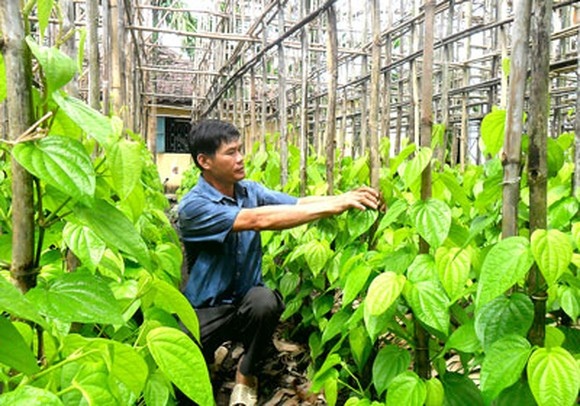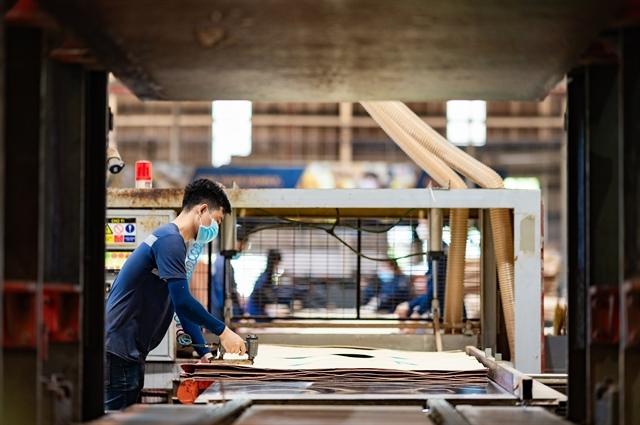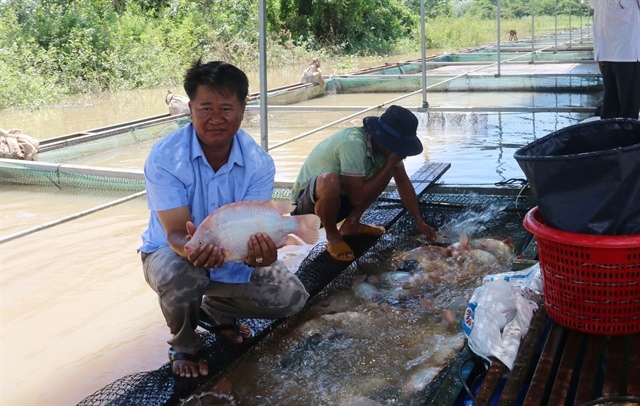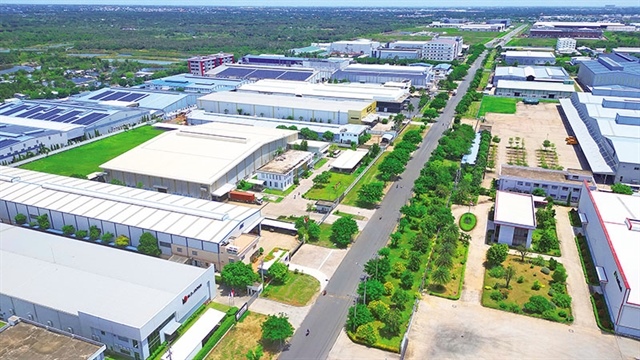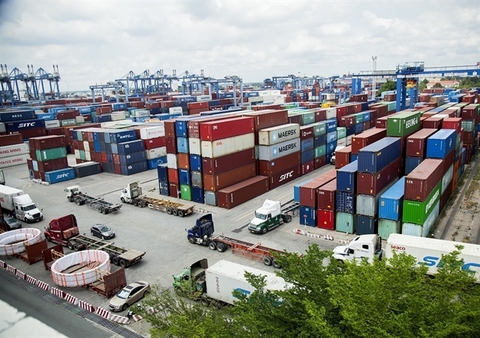Urbanization harming socio-cultural values
Urbanization harming socio-cultural values
There are some concerned officials who have now taken strict measures and have also launched active campaigns to maintain the country’s socio-cultural values as urbanization and modern development plans are turning cities such as Ho Chi Minh City into a veritable concrete jungle.
Illustrative photo. |
This is good news for the locals, as well as those concerned about keeping alive traditional values and the cultural heritage of the country. The People's Committee of the suburban district of Hoc Mon in Ho Chi Minh City has recently launched a campaign calling for locals to grow more betel plants and betel-nut palms so that visitors and the younger generations have a clear idea about the nickname of ‘18 villages of betel plants and betel-nut palms', which was given to Hoc Mon District and for which it is well-known.
Support for new campaign
Although the campaign has just recently been launched, it is being strongly supported by the locals, and some green fields of betel plants and betel-nut palms have already begun to appear here and there in Hoc Mon district. For the elderly folks who were born here and grew up in this area, it has come as an amazing welcome piece of news.
An elderly native woman Ms Bay said that she has lived in the commune of Ba Diem all her life and the image of the betel plants and betel-nut palms are deeply rooted in her mind. It's heart-rending that the area for growing betel plants and betel-nut palms has been shrinking in the last few years. She is afraid that the future generations will never see the betel plants and betel-nut palms in this area, which used to be famous for having 18 villages growing betel plants and betel-nut palms in the commune of Ba Diem in Hoc Mon District.
Ho Chi Minh City is made up of several different groups of residents with different cultural backgrounds. The downtown districts 1 and 3 are filled with French and Western style architectural buildings and structures while districts 5, 6, 8 and 11 are influenced by Chinese cultural and traditional features in daily life and business activities. The areas of Tan Binh District and Binh Thanh District, formerly called Gia Dinh Area, reflect cultural aspects of Vietnamese immigrants from the Central and Northern regions, when a large number of northerners moved to Ho Chi Minh City, formerly known as Saigon, in 1954 when the country was divided into two parts of North Vietnam and South Vietnam.
Ho Chi Minh City's Northwestern and Northeastern areas of Hoc Mon, Cu Chi and Thu Duc show the social activities of growing vegetables and fruit trees while the Southern areas of Binh Chanh, Nha Be and Can Gio, indicate the cultural features of paddy field farmers and fishermen. In other areas of Ho Chi Minh City there are residents who are mostly of the minority groups of Islamic Khmer and Champ people. In all there are 15 such groups surrounding the mosques in Ho Chi Minh City.
About 20 years ago, the people in specific areas preserved their cultures and traditions so well that it was easy to recognize their distinctive cultural features. Now, after more than 20 years of urbanization, the districts and areas have begun to look very similar, with lots of high-rise buildings all around the city. Thu Duc was famous for its yellow apricot blossom gardens, which have now all gone. Villages which used to be well-known for forging copper items in Go Vap or making bamboo products in Cu Chi have suffered the same fate.
Hoc Mon used to be an area with typical cultural features of the Southern people. It was filled with the green color of fruit trees, vegetables, betel plants, betel-nut palms, and rows of bamboo trees. It was the place with the largest number of southern-style houses of two typical kinds, namely, the T-shaped houses and the square houses. The T-shaped houses were made up of a big main structure with two smaller parts and surrounded by one-meter-tall hedges and a bed of betel plants and betel-nut palms in front of the house. Square houses were meant for worshipping the God in the area and considered to be a powerful god that protected and supported the local people. Square houses were also used as communal halls for village events.
Hoc Mon District has also been well-known for having the largest number of temples, shrines, and pagodas in the Southeastern part of Vietnam. The communal temple in Hoc Mon worships the most important God, which has been a holy heavenly body in people's belief for hundreds of years. The communal temples are specially designed structures like the Tan Thoi Nhat Temple, Binh Ly Temple, Tan Dong Temple in Dong Thanh Commune, My Hoa Temple in Tan Xuan Commune, Xuan Thoi Thuong Temple and Hoa Binh Temple in Xuan Thoi Son Commune.
Since 1995, urbanization has seriously affected the cultural features of the Southerners in this area. The fields of betel plants and betel-nut palms have almost gone, partly because the younger generations do not eat betel leaves and betel-nuts and partly because much of the land in the area has been used up for industrial parks and production facilities. Now the T-shaped houses and square houses have become modern houses along the streets, considerably reducing the green spaces in the district.
Loss of cultural values
When it comes to urban planning, we tend to focus more on technical issues and forget about the socio-cultural aspects. Urbanization in the manner of extending from the center and along the streets has deteriorated the cultural values of the residential areas. Urbanization in developed countries always gives a significant priority to preserving cultural features in a way that urbanization can still keep alive the socio-cultural diversity and traditions of different areas.
After expanding the city in 2008, Hanoi began to gradually switch from urbanizing the city in areas to urbanizing it in an in-depth way and concentrating more on socio-cultural qualities. Although there are still some unsatisfactory results, it can be said that Hanoi has been successful in its socio-cultural development plans. The capital city has made plans to preserve three regions of different cultural values. The first region is the former Hanoi, made up of ten downtown districts that were there before 2008.
This is a cultural region with cultural features that have been deeply rooted for a long time and influenced by foreign characteristics, mainly French, at a high civilization level. The cultures of this downtown area came into existence with immigrants' considerable contributions from different areas, creating its wide cultural features. The second region has its cultural attributes from the city's Northern and Western areas. These areas have features of the Midlands and are affected by the highland cultural qualities.
The third cultural region is in the Southern and Eastern parts of Hanoi. This area has cultural features of the Red River Delta, typical of paddy field cultures and remarkably affected by coastal cultures. Even though there are phenomena of overlapping cultural features in each region, the regions always have their own cultural marks and forms.
For instance, the province of Ha Tay, which was merged into Hanoi in 2008, has more than 200 traditional craft villages, the most famous of which are Van Phuc Silk Village, Quat Dong Embroidery Village, Xuan Ha Flour Animal Village, Chang Son Capentry Village and Duyen Thai Lacquerware Village. Ha Tay also has more than 100 festivals of national, provincial, local, and family levels. The national festivals include the Perfume Pagoda Festival, Thay Pagoda Festival and Du Singing Festival. It can be said that Ha Tay is among the areas with the most significant agricultural characteristics of the North and communal traditions of the entire country.
Ho Chi Minh City still has five suburban districts. Although some cultural features have been severely damaged, Hoc Mon, Cu Chi and Can Gio still preserve cultural traditions of their areas. This is why critical issues must be taken into consideration before a decision is made to turn these three districts into concrete areas of Ho Chi Minh City.


